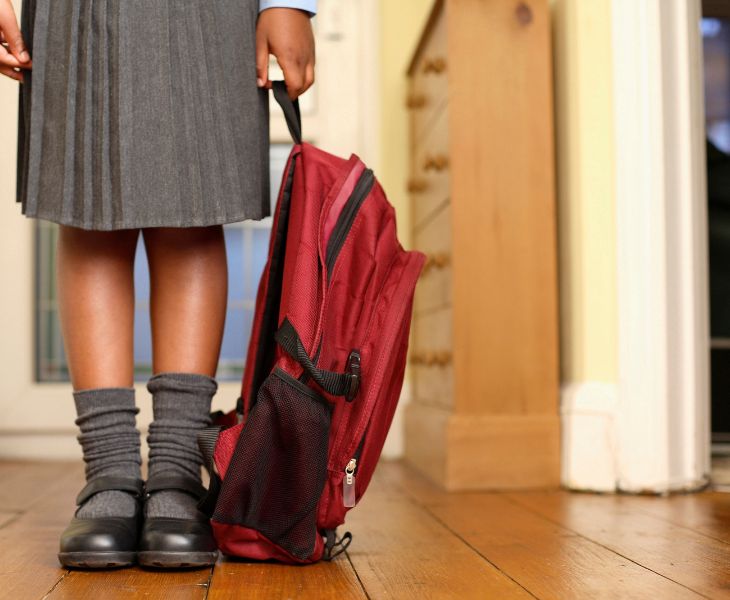For those who went to school before digital textbooks became commonplace, you no doubt remember carrying extremely huge backpacks, and the relief you felt slipping your bag’s straps off your shoulders after getting through the front door. School bags with a lot of weight place stress on the spine, shoulders, neck, and hips, resulting in fatigue and strain. This is especially true for children; as their bodies are still developing, they can be even more susceptible to the problems that excessive loads can cause, with longer-lasting effects such as bad posture, slouching, or an altered gait becoming visible.
Even though paper textbooks may not be as widespread in 2023, students nevertheless carry around water bottles, sports gear, tech, and lunch boxes, which can definitely add up. Luckily, by reducing weight where you can and employing some simple tips, you can ensure your child is better protected from the negative effects of carrying heavy backpacks.
How much should a school bag weigh?
As expected, this question does not provide a one-size-fits-all answer. Rather, individual factors need to be taken into consideration, such as:
- Age and weight of the child
- Physical fitness of the child
- Weight distribution inside the backpack
- The amount of time spent carrying the backpack.
A study from 2003 suggests students should carry loads smaller than 20% of their body weight; however, this number seems to have been revised down in recent years. A 2017 article from Harvard says 15-20%, a 2020 article from the Cleveland Clinic cites a paediatrician who claims 10-15% is optimal, while a recent Sydney Morning Herald article—drawing on the knowledge of Australian Physiotherapy Association paediatric group chairwoman Nicole Pates—gives a 10% figure.
Regardless of the exact number, Pates notes that it is unrealistic to weigh bags every day against a fixed guideline, suggesting the importance of flexibility and common sense. If a student is walking longer distances, rather than catching the bus, it makes sense to lighten the load as much as possible.
Children’s school bags: 5 best practices
Luckily, averting possible back pain and other issues for your children isn’t so difficult. Here are some simple recommendations that you can put in place at any time.
Invest in a proper school bag
While they may be slightly more expensive than your normal backpack, a school bag with different compartments, a range of straps, and proper padding can be a very worthwhile investment. As you would expect, extra straps (such as those for hips) help the load to become better distributed between different parts of the body—as does the ability to put certain items in different compartments. In addition, padding on the back and shoulders can provide comfort, preventing chafing and parts of the bag digging into the body.
Make sure the backpack doesn’t hang too low
While a low-hanging backpack may look stylish, it also puts more weight on the shoulders. An article published by Harvard Health points to the American Academy of Orthopedic Surgeons, who advise that a backpack should optimally hang about two inches above the waist.
Distribute weight properly
While we mentioned above that a range of compartments can help with the distribution of weight, so can the methodical placement of the bag’s contents. It is recommended to keep the heaviest items close to the spine, reducing strain and allowing for better balance.
Assess what can be left at home on any given day
There are some things that rarely leave the school bag that may not be required on a daily basis. Take a minute to do an assessment the night before or in the morning to see what is actually needed, hopefully resulting in the removal of unnecessary books or other items from heavy backpacks.
Listen to your child
Rules of thumb only go so far. Your child is likely to let you know if their backpack is causing them discomfort, and from there you can work on a solution. In some cases, it’s worth reaching out to the school, as they may have lockers or other spaces for leaving books or sports equipment, lightening the load for students when travelling to and from school.

